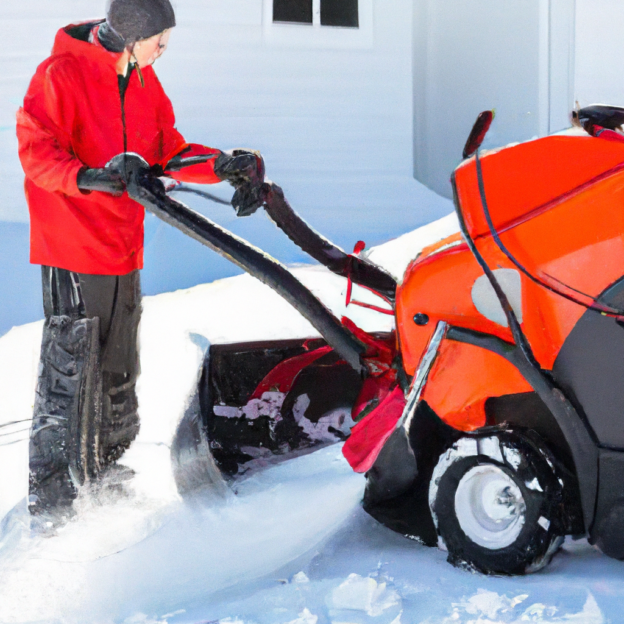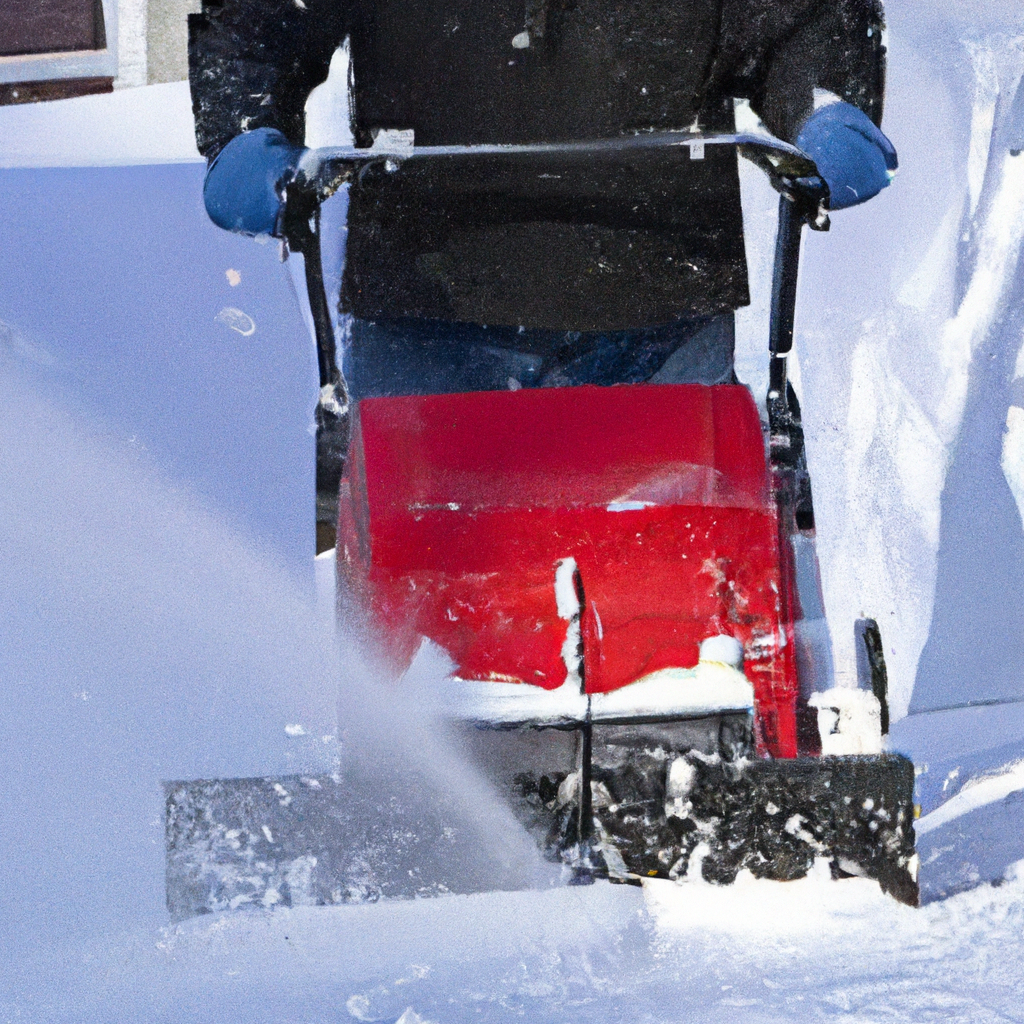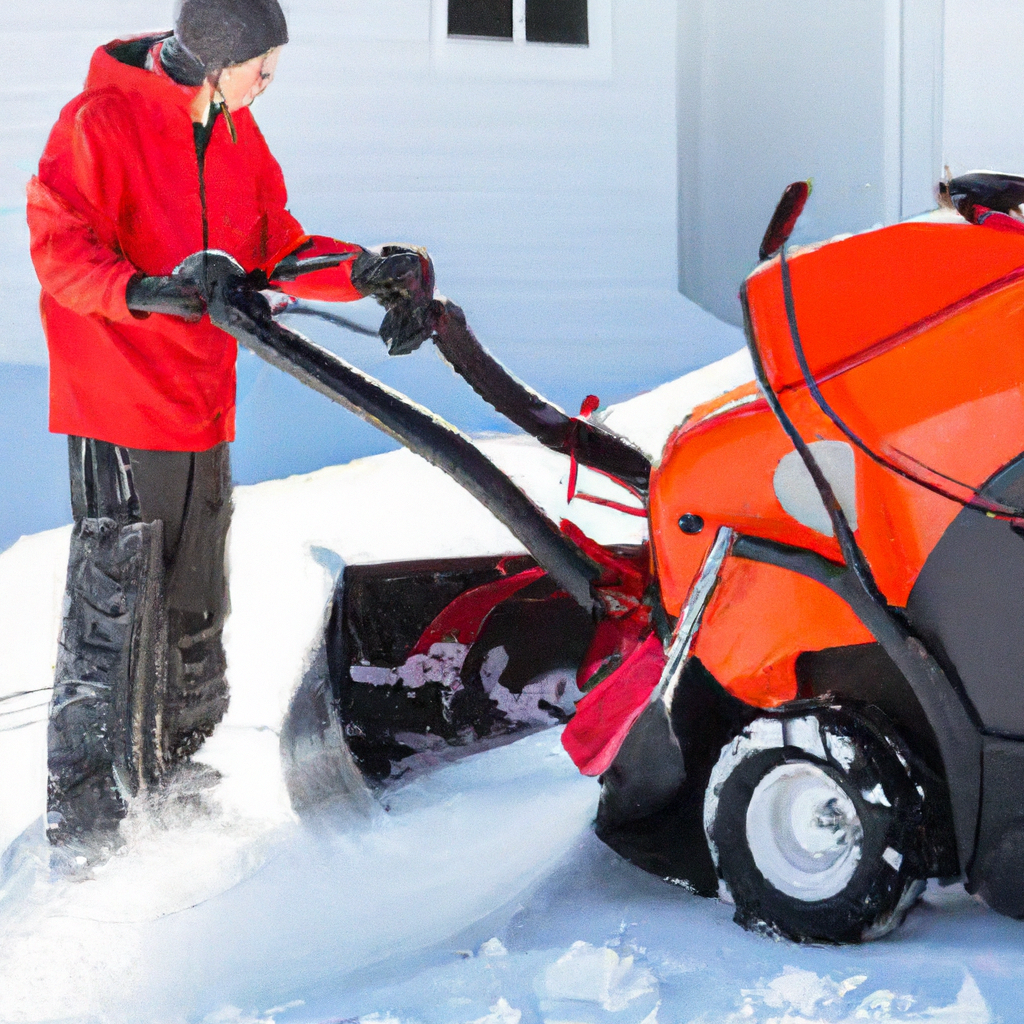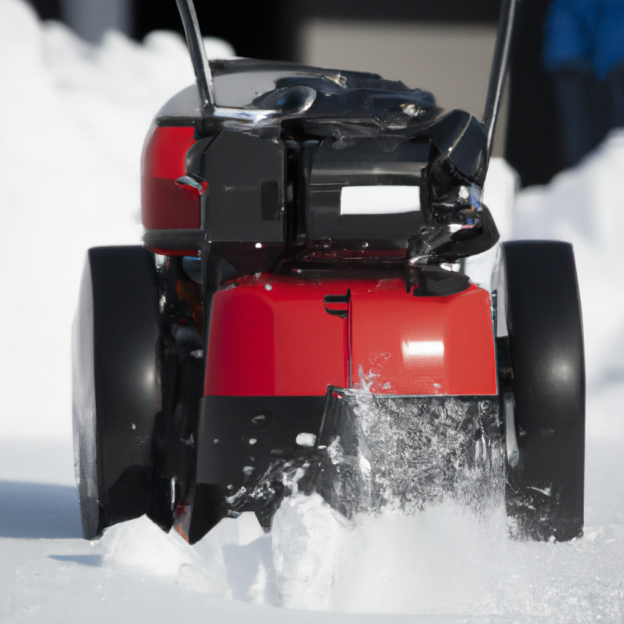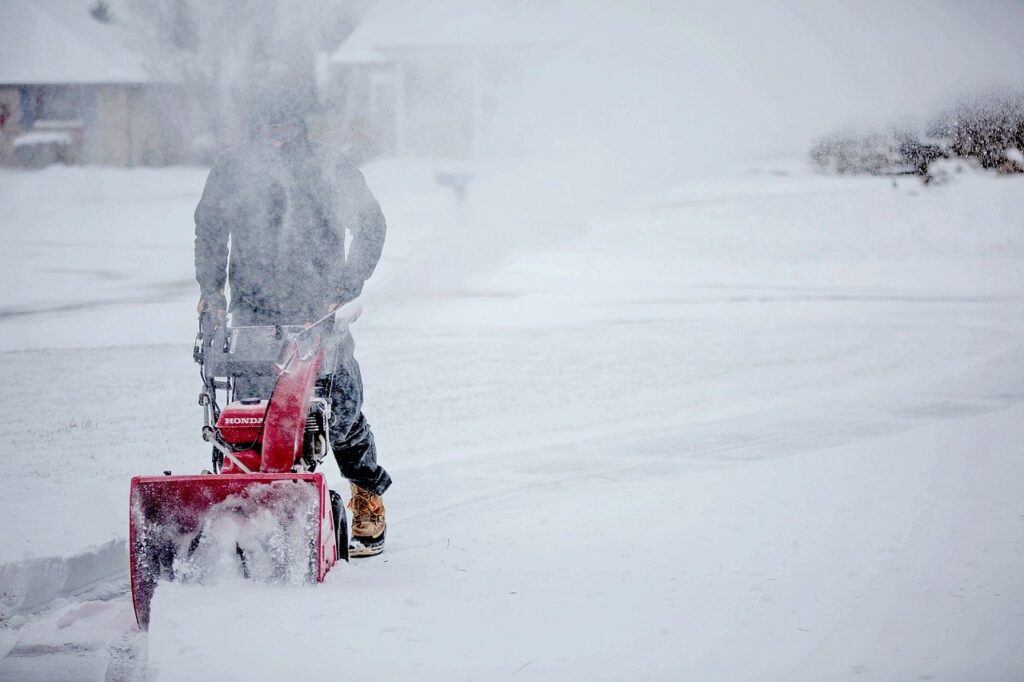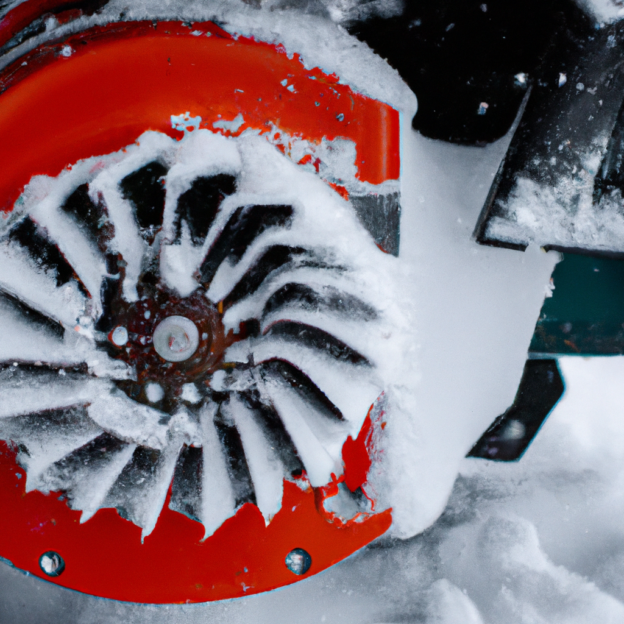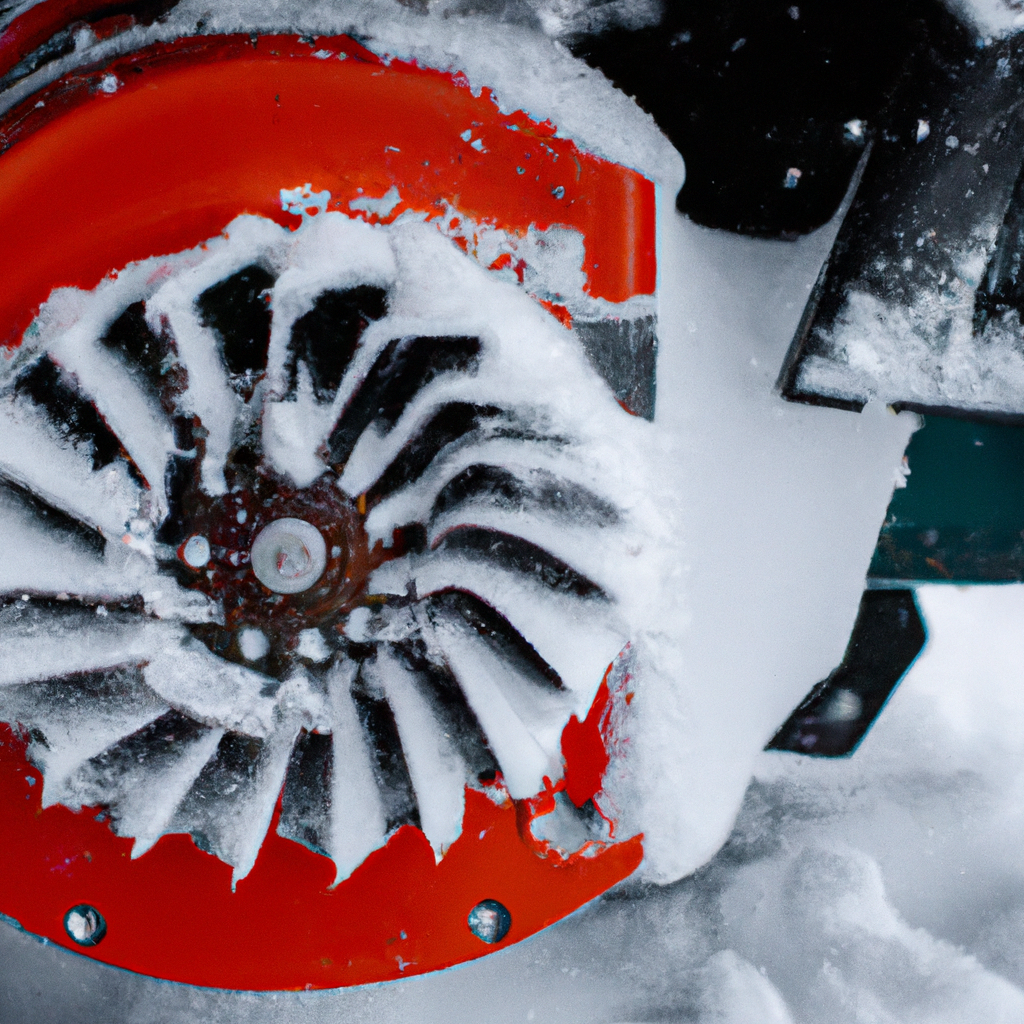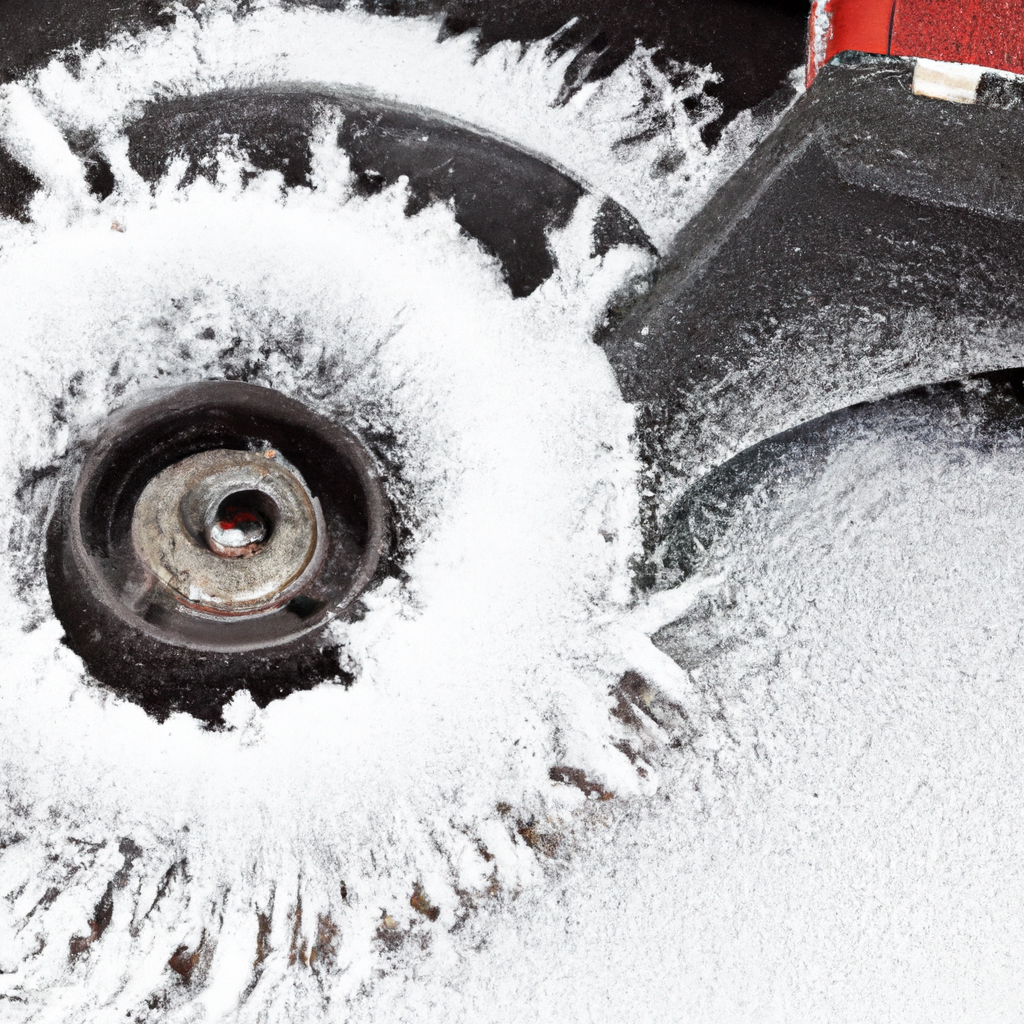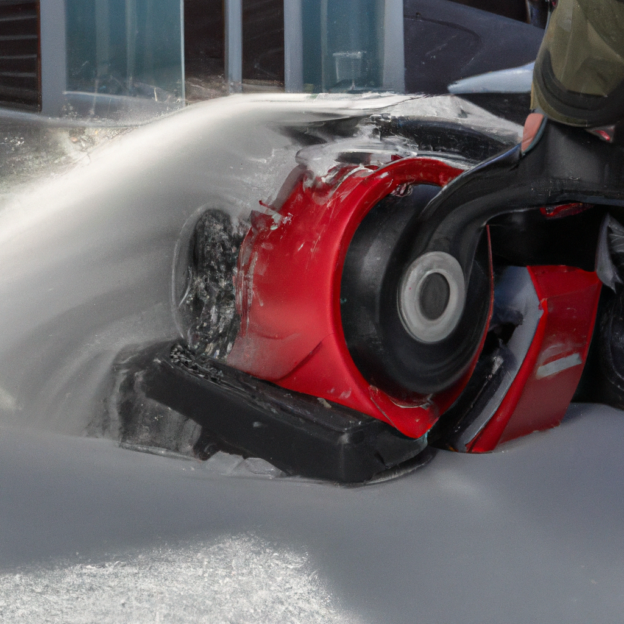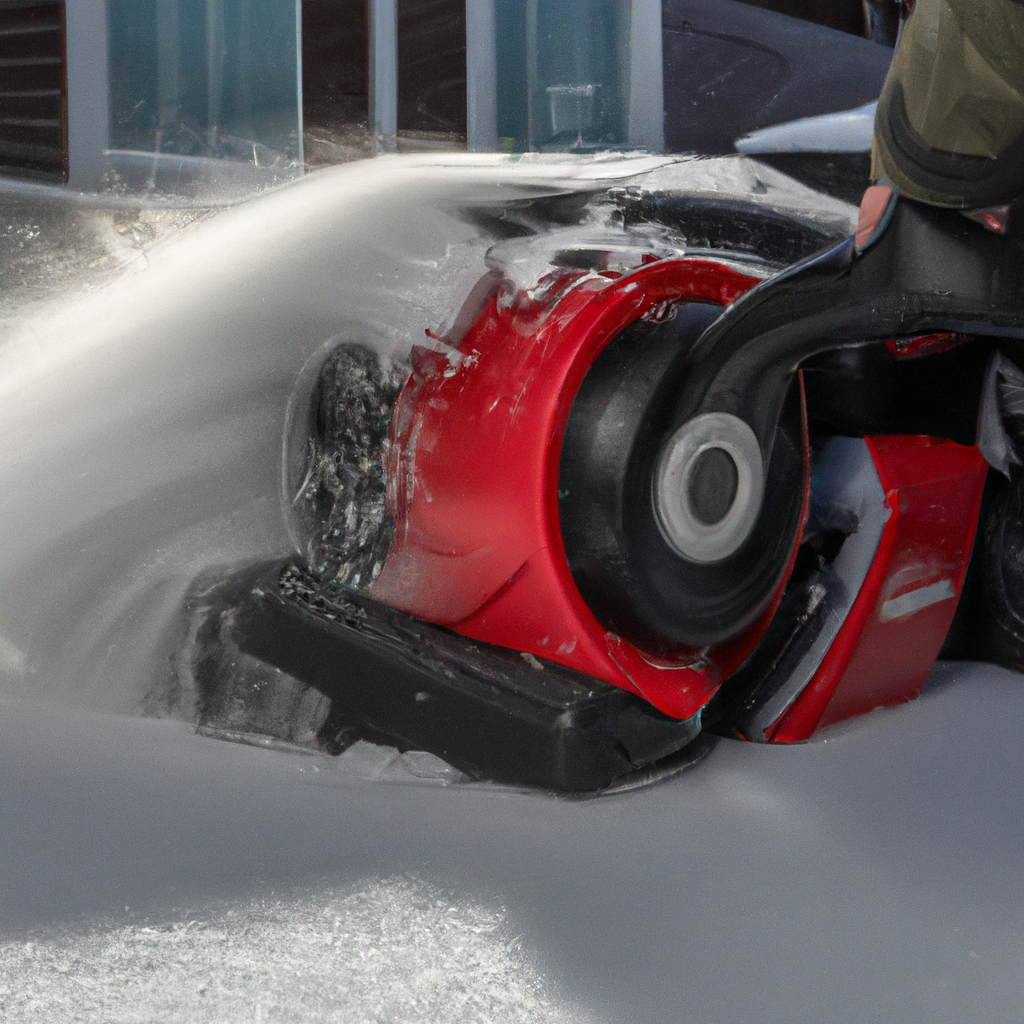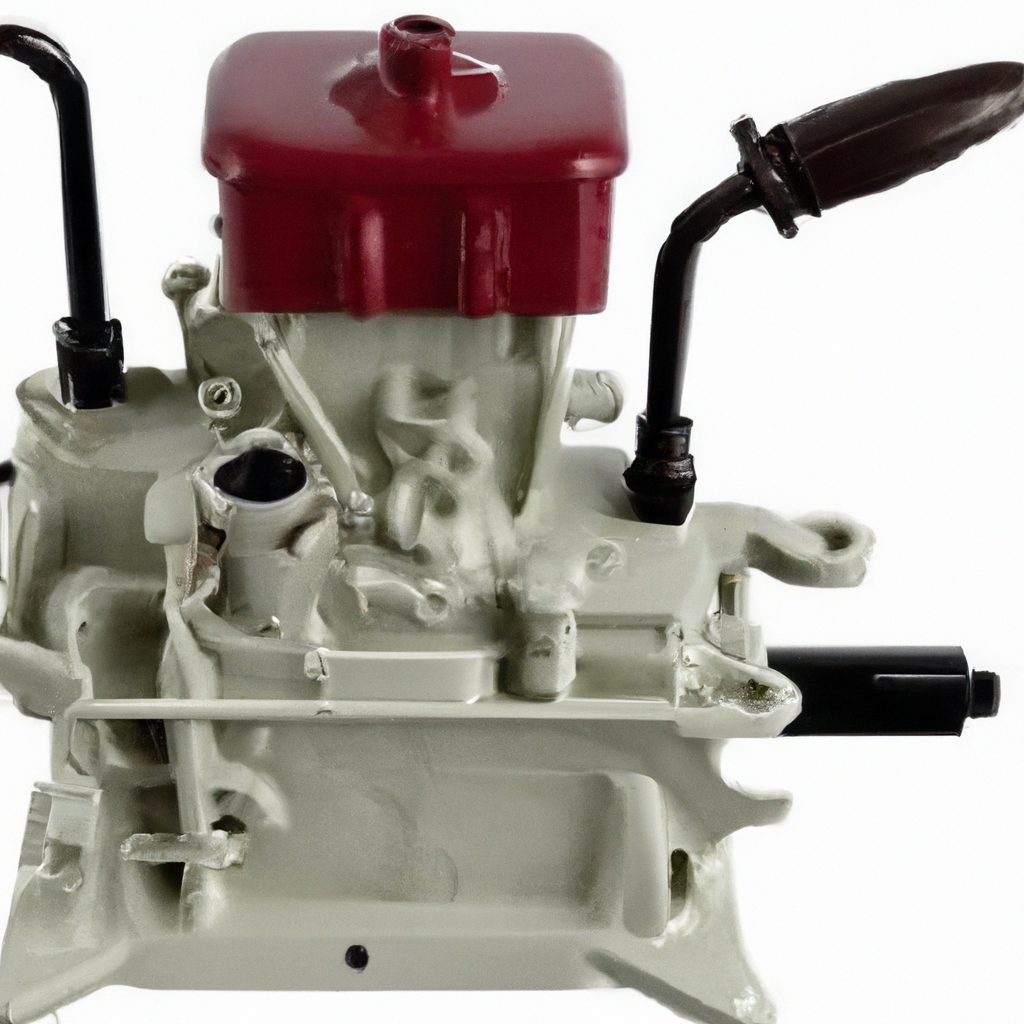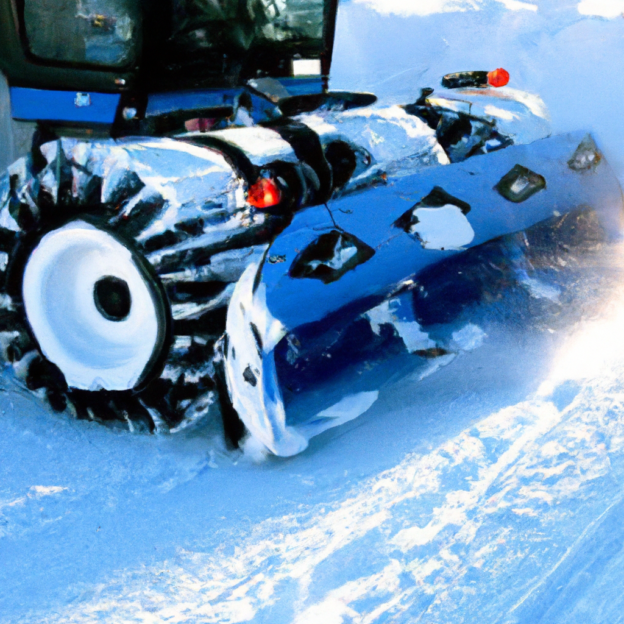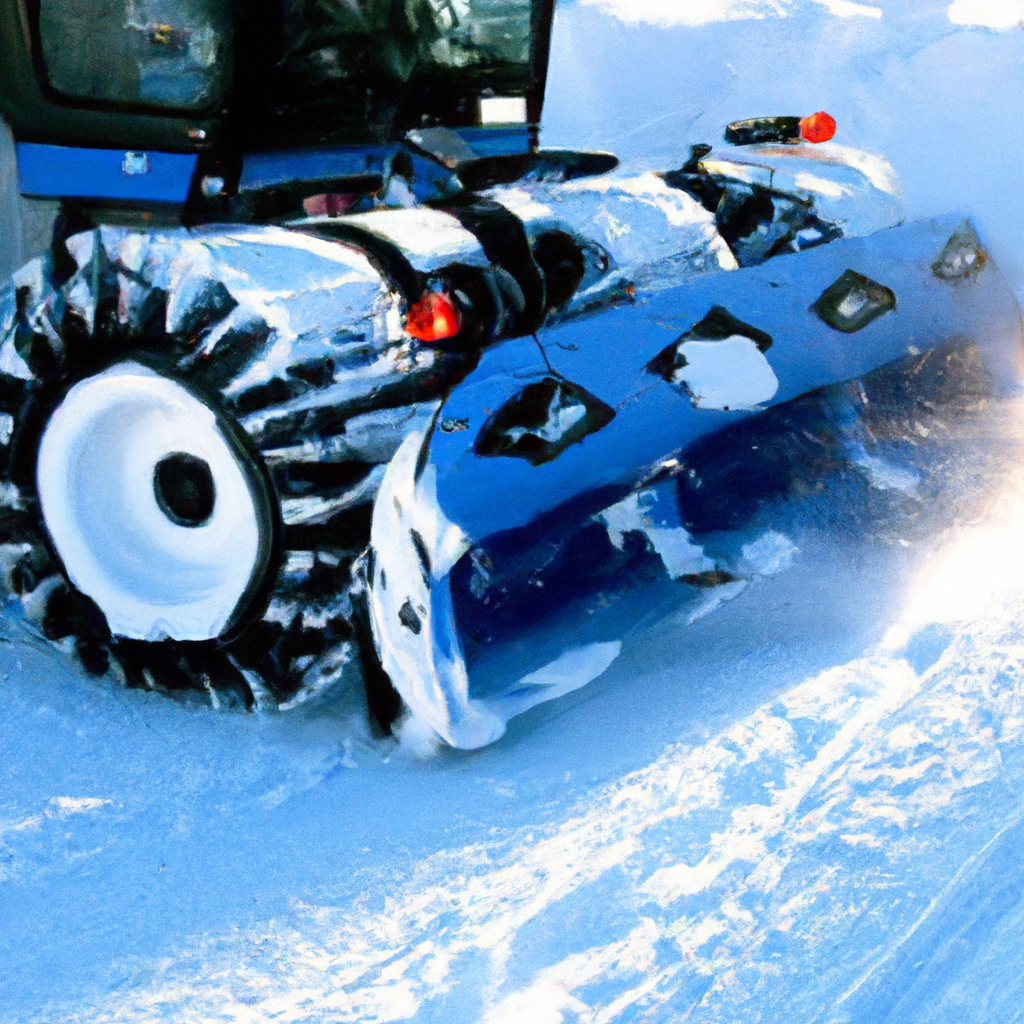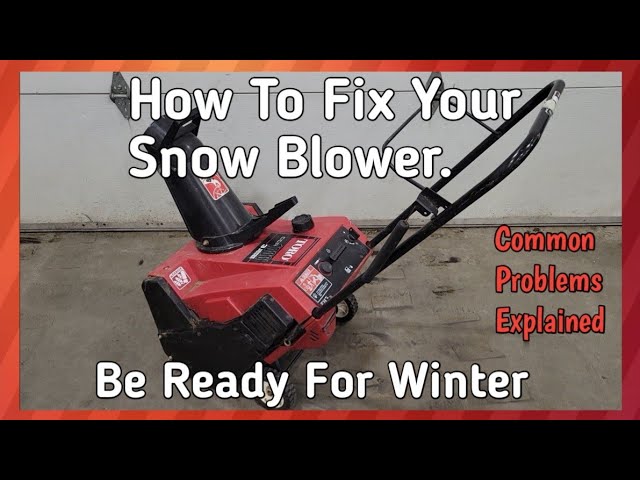So your child has been begging you to let them help out with the snow removal this winter. You can’t deny that their enthusiasm is adorable, but the big question remains: is it actually safe for children to operate a snowblower? As a parent, you want to strike the right balance between teaching responsibility and ensuring their well-being. In this article, we will explore the potential risks and benefits associated with kids using a snowblower. By the end, you’ll have a clearer understanding of whether it’s a good idea to let your little helper take on this task.
Potential dangers of children operating a snowblower
Risk of injury from moving parts
One of the primary concerns when it comes to children operating a snowblower is the risk of injury from the machine’s moving parts. Snowblowers are equipped with sharp blades and fast-spinning augers that can cause serious harm if not handled properly. Children may not have the strength or coordination to maneuver the snowblower safely, increasing the chances of accidents and injuries.
Potential for debris to be thrown
Another danger of children operating a snowblower is the potential for debris to be thrown. Snow, ice chunks, or small rocks can be picked up by the machine’s auger and thrown at high speeds. This can pose a risk not only to the child operating the snowblower but also to nearby bystanders, pets, or property.
Risk of entanglement
Children may not fully understand the risk of entanglement with the snowblower’s moving parts. Loose clothing, scarves, or long hair can get caught in the machine, leading to serious injuries or even amputations. Their smaller size and limited strength may make it difficult for children to quickly react and free themselves if they become entangled.
Difficulty in maneuvering the snowblower
Operating a snowblower requires physical strength and coordination. It can be challenging even for adults to navigate through heavy snow, especially in steep or uneven terrain. Children may lack the physical abilities necessary to maneuver the snowblower effectively, increasing the likelihood of accidents or damage to the machine.
Lack of experience and understanding of safety precautions
Children lack the necessary experience and understanding of safety precautions associated with operating a snowblower. They may not be familiar with how to properly start, stop, or maintain the machine. Additionally, they may not fully grasp the importance of wearing safety gear, maintaining proper posture, or keeping a safe distance from the machine and others.
Factors to consider when deciding if a child can operate a snowblower
Age of the child
The age of the child is an important factor to consider when determining if they can operate a snowblower. Younger children may lack the physical strength and cognitive abilities necessary to safely handle a snowblower. The American Academy of Pediatrics advises against children under the age of 12 operating a snowblower, as they may not have the maturity or coordination required.
Physical and cognitive abilities of the child
It is crucial to assess the physical and cognitive abilities of the child before allowing them to operate a snowblower. Snowblowers can be heavy and require significant physical exertion to maneuver, especially in challenging snow conditions. Children should have the necessary strength, coordination, and spatial awareness to handle the machine safely.
Maturity and responsibility level of the child
Another important consideration is the maturity and responsibility level of the child. Operating a snowblower requires attentiveness, decision-making skills, and the ability to follow safety guidelines. Children should demonstrate a level of maturity and responsibility that shows they can prioritize safety and understand the potential risks involved.
Supervision and guidance from an adult
Even if a child meets the age and ability requirements, they should always be supervised by a responsible adult when operating a snowblower. The adult can provide guidance, ensure safe practices, and step in if any potential dangers arise. The level of supervision may depend on the child’s age, experience, and the complexity of the snowblower.
Training and education on snowblower safety
Before allowing a child to operate a snowblower, they should receive proper training and education on snowblower safety. This includes learning how to start and stop the machine, understanding the different parts and functions, and being aware of potential hazards. Training should also cover proper maintenance and storage procedures to ensure the longevity and safe operation of the snowblower.

This image is property of pixabay.com.
Legal guidelines and recommendations regarding children operating snowblowers
Age restrictions set by manufacturers
Snowblower manufacturers often provide age restrictions for operating their machines. These recommendations are based on safety considerations and the expected physical and cognitive abilities of individuals at different ages. It is crucial to adhere to these guidelines to minimize the risk of accidents and injuries.
Local regulations and bylaws
Local regulations and bylaws may also set specific age restrictions or guidelines for children operating snowblowers. These regulations are in place to protect the safety and well-being of individuals within the community. It is important to familiarize yourself with these local laws and comply with them accordingly.
Safety recommendations from organizations and experts
Numerous organizations and experts provide safety recommendations regarding children operating snowblowers. The American Academy of Pediatrics, for example, advises against children under the age of 12 operating snowblowers. These recommendations are based on extensive research and expertise in child safety. It is essential to consider and prioritize these recommendations when making decisions regarding children and snowblower operation.
Alternatives to children operating snowblowers
Manual snow removal methods
One of the safest alternatives to children operating snowblowers is manual snow removal. Shoveling, using a snow pusher, or using a snow rake are all effective methods of clearing snow without the use of heavy machinery. These manual methods allow children to participate in snow removal while minimizing the risk of accidents and injuries.
Assistance from adults or professionals
Instead of allowing children to operate snowblowers, adults can take on the responsibility of clearing the snow or hire professional snow removal services. This ensures that the task is handled safely and efficiently, without putting children at risk. Involving children in other aspects of snow removal, such as clearing walkways or spreading salt, can still provide them with a sense of involvement and responsibility.
Use of smaller and safer snow-clearing equipment
If snowblowers are necessary for clearing heavy snow, considering smaller and safer options can be an alternative. Some manufacturers offer smaller snowblowers specifically designed for lighter-duty tasks and easier maneuverability. These models may have additional safety features or be more suitable for children to operate under close supervision.

This image is property of pixabay.com.
Safety precautions for children operating snowblowers
Wearing appropriate safety gear
When children operate snowblowers, it is essential for them to wear appropriate safety gear. This includes protective goggles, ear protection, sturdy gloves, and non-slip footwear. The gear should fit properly to ensure maximum protection against debris, noise, and potential accidents.
Understanding the snowblower’s operation manual
Children operating snowblowers should thoroughly read and understand the machine’s operation manual. The manual provides essential information on safe operation, maintenance, and troubleshooting. By familiarizing themselves with the manual, children can ensure they are using the snowblower properly and following all safety guidelines.
Clearing the area of potential hazards
Before starting the snowblower, it is crucial to clear the area of any potential hazards. This includes removing rocks, sticks, toys, and other debris that could be picked up by the machine or cause a tripping hazard. Children should be taught to inspect the area thoroughly before beginning snowblower operation.
Maintaining proper posture and hand placement
Children should be taught to maintain proper posture and hand placement while operating a snowblower. This includes standing upright, keeping a firm grip on the handles, and never placing hands or feet near the moving parts. By maintaining the correct posture and hand placement, children can minimize the risk of accidents and injuries.
Keeping children and bystanders at a safe distance
Children operating snowblowers should be aware of the importance of keeping both themselves and bystanders at a safe distance. Snowblowers can throw debris at high speeds and pose a risk to anyone in close proximity. Children should be trained to maintain a safe perimeter around the operating area and ensure that no one is within reach of the machine’s moving parts.
Supervision and training for children operating snowblowers
Direct adult supervision
Direct adult supervision is crucial when children are operating snowblowers. An adult should be present at all times to provide guidance, monitor safe practices, and step in if any potential dangers arise. The level of supervision may vary depending on the child’s age, experience, and the complexity of the snowblower.
Gradual training and practice
Children should receive gradual training and practice before operating a snowblower independently. This can involve starting with smaller, lighter-duty models or allowing the child to assist under close adult supervision. Gradual training allows the child to develop the necessary skills, confidence, and awareness of safety precautions associated with snowblower operation.
Understanding the potential risks and how to mitigate them
Part of the training for children operating snowblowers should involve understanding the potential risks and learning how to mitigate them. Children should be educated on the dangers of moving parts, the potential for debris to be thrown, and the risk of entanglement. By fully understanding these risks, children can take appropriate precautions and make informed decisions while operating the snowblower.
Teaching snowblower maintenance and storage
In addition to operation, children should also be taught about snowblower maintenance and storage. This includes understanding how to clean the machine properly, perform routine maintenance tasks, and store it safely when not in use. Teaching these aspects of snowblower ownership helps children develop a well-rounded understanding of the responsibilities and safety practices associated with the equipment.

This image is property of pixabay.com.
Case studies and real-life incidents involving children and snowblowers
Accidents and injuries caused by children operating snowblowers
There have been numerous incidents of accidents and injuries caused by children operating snowblowers. These accidents range from entanglement with moving parts to being hit by debris thrown by the machine. Some injuries have resulted in permanent disabilities or even fatalities. These case studies serve as a sobering reminder of the potential dangers that can arise when children operate snowblowers without adequate knowledge, skills, and supervision.
Legal consequences and liability for parents and guardians
Parents and guardians may face legal consequences and liability if their child causes damage, injury, or harm while operating a snowblower. If it is determined that the child was not of an appropriate age, lacked the necessary abilities, or was unsupervised, legal ramifications may follow. It is crucial for parents and guardians to understand their responsibilities and the potential consequences of allowing children to operate snowblowers unsafely.
Expert opinions and recommendations on children operating snowblowers
American Academy of Pediatrics’ stance
The American Academy of Pediatrics advises against children under the age of 12 operating snowblowers. This recommendation is based on extensive research and expertise in child safety. The organization emphasizes the importance of physical and cognitive abilities, maturity, and adult supervision when considering whether a child can operate a snowblower safely.
Recommendations from snowblower manufacturers
Snowblower manufacturers typically provide age recommendations and safety guidelines for operating their machines. These recommendations are based on the specific design, capabilities, and potential risks associated with their snowblowers. Taking into account the manufacturer’s recommendations is essential to ensure the safe operation of the equipment.
Insights from safety experts and professionals
Safety experts and professionals in the field of snowblower operation emphasize the importance of assessing a child’s abilities, providing proper training and supervision, and prioritizing safety precautions. They stress the potential dangers and risks involved and encourage parents and guardians to consider age-appropriate alternatives or involve children in other aspects of snow removal that are safer and more suitable for their capabilities.

Parental responsibility and decision-making
Evaluating the child’s capabilities and maturity
As parents and guardians, it is crucial to evaluate the capabilities and maturity of the child before allowing them to operate a snowblower. Assessing their physical strength, coordination, cognitive abilities, and level of responsibility is essential to make an informed decision. It is important to prioritize the safety of the child and others when considering whether they are ready to operate a snowblower.
Situational evaluation and risk assessment
Each situation and environment where a snowblower is used should be evaluated and assessed for potential risks. Factors such as the type of snow, the presence of bystanders or obstacles, and the complexity of the equipment should be taken into account when determining whether it is safe for a child to operate a snowblower. A thorough risk assessment can help minimize the likelihood of accidents or injuries.
Balancing independence and safety
Balancing a child’s desire for independence with their safety is a delicate task. While it is important to encourage children to take on responsibilities and learn new skills, their safety should always be the top priority. It may be necessary to find alternative ways for children to be involved in snow removal that are more appropriate for their age and abilities, ensuring both their independence and their well-being.
Conclusion
Considering the potential dangers, legal guidelines, and expert recommendations, the decision of whether it is safe for children to operate a snowblower rests on various factors. Age, physical and cognitive abilities, maturity, supervision, training, and compliance with safety precautions all play crucial roles in determining the suitability of a child operating a snowblower.
Parents and guardians have a responsibility to evaluate these factors and make informed decisions that prioritize the safety of the child and others. Alternatives such as manual snow removal, assistance from adults or professionals, and safer snow-clearing equipment should be considered to minimize risks while still involving children in snow removal activities.
By understanding the potential dangers, adhering to legal guidelines, and seeking expert opinions, parents and guardians can promote safe and responsible snow-clearing practices. Balancing independence and safety ensures that children are provided with opportunities to learn and develop skills while minimizing the risk of accidents and injuries associated with operating snowblowers.


